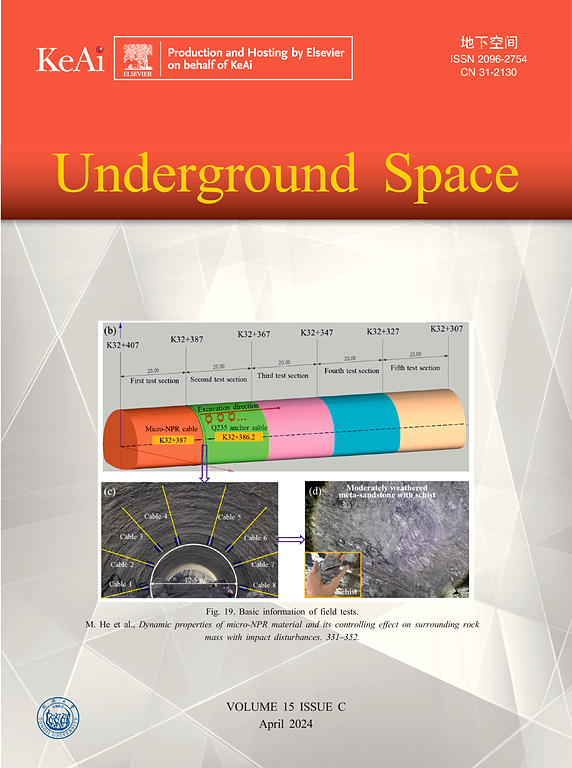地铁隧道施工温室气体排放评价
IF 8.3
1区 工程技术
Q1 ENGINEERING, CIVIL
引用次数: 0
摘要
本研究评估了与地铁隧道建设相关的温室气体(GHG)排放,旨在确定主要排放源并为减排策略提供见解。以广东省某地铁线路特定隧道的土木工程施工为例,定量分析了上游建材生产、建材运输和现场施工三个阶段的温室气体排放构成。结果表明,上游建材生产和现场施工合计占隧道施工温室气体排放总量的95%以上。分析进一步表明,在隧道施工过程中,一小部分建筑材料和工程机械占了温室气体排放总量的大部分,符合帕累托原则。研究结果强调了准确评价高影响建筑材料和建筑机械的重要性,特别是在基本能源消耗数据有限的情况下。利用回收材料和提高机械效率等战略可以显著减少排放。例如,钢铁和混凝土的回收率达到10%至30%,可以将隧道施工的温室气体排放总量减少5.51%至9.94%,而将机械效率提高10%至30%,则可以减少高达2.29%的排放。研究结果为低碳地铁隧道建设提供了科学依据。本文章由计算机程序翻译,如有差异,请以英文原文为准。
Evaluation of greenhouse gas emissions in subway tunnel construction
This study evaluates the greenhouse gas (GHG) emissions associated with the construction of subway tunnels, aiming to identify the primary sources of emissions and provide insights into emission reduction strategies. Using the civil engineering construction of specific tunnels of a subway line in Guangdong Province, China, as a case study, this research quantitatively analyzes the composition of GHG emissions across three stages: upstream building materials production, building materials transportation, and on-site construction. The results indicate that upstream building materials production and on-site construction collectively account for over 95% of the total GHG emissions during tunnel construction. The analysis further reveals that a small proportion of building materials and construction machinery accounts for the majority of total GHG emissions during tunnel construction, aligning with the Pareto principle. The findings emphasize the importance of accurate evaluation of high-impact building materials and construction machinery, particularly in contexts where basic energy consumption data are limited. Strategies such as utilizing recycled materials and enhancing machinery efficiency can lead to significant emission reductions. For instance, achieving a recycling rate of 10% to 30% for steel and concrete can reduce total GHG emissions from tunnel construction by 5.51% to 9.94%, while improving machinery efficiency by 10% to 30% can reduce emissions by up to 2.29%. These findings provide a scientific basis for low-carbon subway tunnel construction.
求助全文
通过发布文献求助,成功后即可免费获取论文全文。
去求助
来源期刊

Underground Space
ENGINEERING, CIVIL-
CiteScore
10.20
自引率
14.10%
发文量
71
审稿时长
63 days
期刊介绍:
Underground Space is an open access international journal without article processing charges (APC) committed to serving as a scientific forum for researchers and practitioners in the field of underground engineering. The journal welcomes manuscripts that deal with original theories, methods, technologies, and important applications throughout the life-cycle of underground projects, including planning, design, operation and maintenance, disaster prevention, and demolition. The journal is particularly interested in manuscripts related to the latest development of smart underground engineering from the perspectives of resilience, resources saving, environmental friendliness, humanity, and artificial intelligence. The manuscripts are expected to have significant innovation and potential impact in the field of underground engineering, and should have clear association with or application in underground projects.
 求助内容:
求助内容: 应助结果提醒方式:
应助结果提醒方式:


